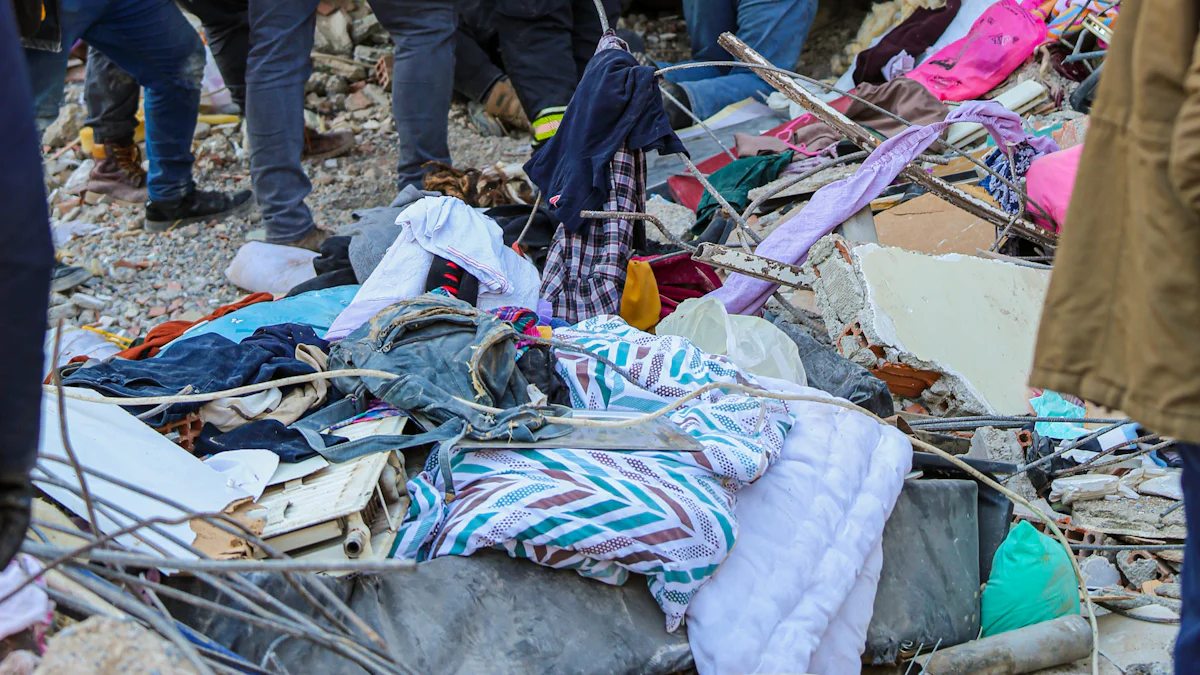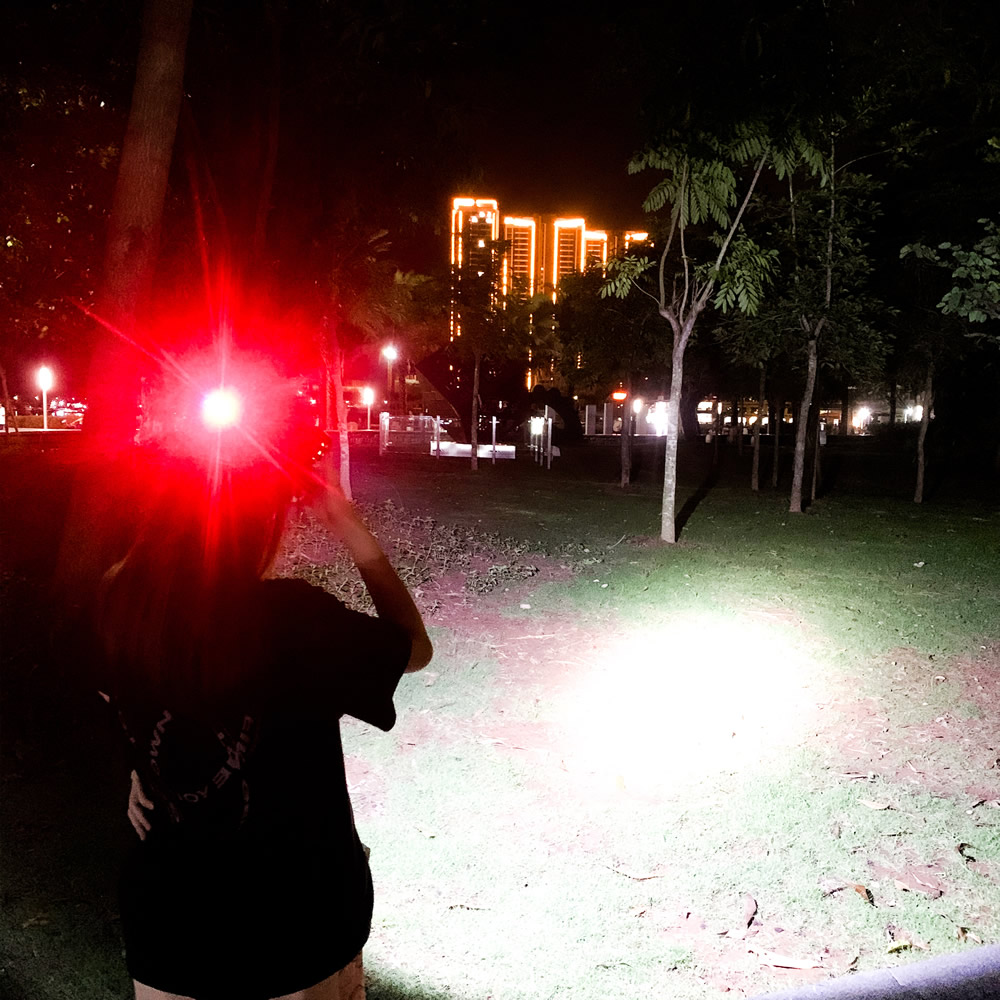The Essential Role of Headlamps in Disaster Response

In emergencies, having a reliable source of illumination can make all the difference. Headlamps provide you with hands-free, reliable lighting, allowing you to focus on critical tasks without distraction. During a disaster, low visibility often creates dangerous conditions. A headlamp ensures your safety by lighting your path and surroundings. Unlike solar street lighting, which is stationary, headlamps move with you, offering unmatched flexibility. Whether you’re navigating debris or assisting others, this tool becomes your dependable companion. Its role as emergency lighting highlights its importance in disaster scenarios, where every second counts.
Key Takeaways
Headlamps give light without using your hands, helping you work better in emergencies.
Bright headlamps keep you safe by stopping trips and falls in dark places.
Strong headlamps with lasting batteries are important for disaster help and recovery.
Useful headlamps help with many jobs, like finding people or giving medical care.
Having a good headlamp in your emergency kit gets you ready for surprises during disasters.
The Importance of Headlamps in Disaster Response

Challenges of Low Visibility in Disasters
Disasters often disrupt power grids, leaving entire areas in darkness. Without a reliable source of illumination, survivors and responders face significant risks. Poor lighting increases the chances of accidents, such as trips and falls, especially in debris-filled environments. Well-lit areas are essential for maintaining safety and preventing injuries during disaster recovery efforts.
Low visibility also impacts the efficiency of disaster response teams. It can lead to unstable communication, creating blind spots in command centers. Limited situational awareness makes it harder to predict potential challenges, slowing down recovery operations. In confined spaces, responders may experience disorientation, which complicates rescue missions. These challenges highlight the need for reliable lighting solutions, such as headlamps, to ensure safety and efficiency during disaster response protocols.
Benefits of Hands-Free Lighting for Recovery
Headlamps provide a unique advantage during disaster recovery by offering hands-free lighting. This feature allows you to focus entirely on critical tasks without juggling a flashlight or other tools. Whether you are clearing debris, assisting in medical aid, or navigating unstable terrain, a headlamp ensures you have both hands available for the job.
Unlike solar street lighting, which remains stationary, headlamps move with you. This mobility enhances your ability to adapt to changing conditions. Their versatility supports various disaster management capabilities, from search and rescue to community recovery efforts. Additionally, headlamps contribute to disaster resilience by improving your ability to respond effectively in low-visibility situations. By including a high-quality headlamp in your emergency kit, you strengthen your disaster prevention and mitigation strategies.
Key Advantages of Headlamps in Post-Disaster Recovery
Enhanced Safety and Mobility
Headlamps significantly improve your safety during disaster recovery. They provide reliable lighting in environments where power outages are common. By illuminating your path, they help you avoid trips and falls caused by debris or uneven terrain. This hands-free lighting ensures you can focus on navigating safely without holding a flashlight. Adjustable brightness settings allow you to adapt to different conditions, enhancing your ability to respond quickly in emergencies. Whether you are moving through confined spaces or open areas, headlamps increase your mobility and reduce risks. Their role in disaster response highlights their importance in maintaining safety and efficiency.
Versatility Across Recovery Tasks
The versatility of headlamps makes them indispensable in post-disaster recovery. They support a wide range of tasks, ensuring you can adapt to various challenges. For example:
Preventing trips and falls by providing adequate lighting in low-visibility conditions.
Enhancing focus and accuracy with adjustable brightness settings.
Allowing hands-free operation, enabling you to use tools or machinery safely.
Facilitating better communication by signaling or drawing attention.
Improving response times during emergencies with focused lighting.
This adaptability strengthens disaster management capabilities, ensuring you can handle diverse recovery efforts effectively. Unlike solar street lighting, which remains stationary, headlamps move with you, offering unmatched flexibility. Their ability to perform across multiple scenarios makes them a vital tool for disaster resilience.
Durability and Long Battery Life
Durability is a critical factor when selecting tools for disaster recovery. Headlamps are designed to withstand harsh conditions, including extreme weather and rough handling. Many models feature water-resistant and shockproof designs, ensuring they remain functional in challenging environments. Long battery life further enhances their reliability. You can rely on them for extended periods without frequent recharging or battery replacement. This durability and reliability make headlamps a dependable choice for disaster management and mitigation. By including a high-quality headlamp in your emergency kit, you prepare yourself for the unexpected.
Practical Uses of Headlamps in Disaster Scenarios
Search and Rescue Operations
Headlamps play a vital role in search and rescue operations during disasters. They provide hands-free lighting, allowing you to focus entirely on the task at hand. This feature is especially useful when navigating through collapsed structures or dense debris. The illumination enhances your situational awareness, helping you identify hazards and locate survivors more effectively. During short-range searches, headlamps offer precise task lighting, ensuring you can concentrate on specific areas without distractions. Their reliability in challenging environments makes them indispensable for emergency responders working under pressure. Unlike solar street lighting, which remains fixed, headlamps move with you, adapting to the dynamic nature of rescue missions.
Medical Aid and First Response
In disaster scenarios, medical personnel rely on headlamps to provide critical care in low-visibility conditions. These tools allow you to assess injuries and administer aid without holding a flashlight. This hands-free capability ensures you can focus on precision tasks, such as wound treatment or patient evaluation. Headlamps also improve situational awareness, enabling you to quickly scan the scene for potential hazards or additional patients. Their quality lighting supports accurate assessments, which is essential for effective medical response. Whether you are working in a makeshift clinic or an outdoor setting, headlamps enhance your ability to deliver life-saving care efficiently.
Illuminate injuries for accurate evaluation.
Allow hands-free operation for multitasking.
Enhance focus during delicate procedures.
Improve visibility in chaotic environments.
Community Recovery Efforts
Headlamps contribute significantly to community rebuilding efforts after a disaster. They provide reliable lighting for tasks such as clearing debris, repairing infrastructure, or distributing supplies. Their hands-free design allows you to work efficiently, even in low-light conditions. For example, you can use a headlamp to inspect damaged buildings or assist in setting up temporary shelters. The mobility of headlamps ensures you can adapt to various recovery tasks, unlike stationary solar street lighting. By equipping yourself with a durable headlamp, you enhance your ability to support disaster management and recovery efforts, fostering resilience within your community.
Tip: Always include a high-quality headlamp in your emergency kit to prepare for unexpected challenges during disaster response.
Selecting the Best Headlamp for Disaster Preparedness
Essential Features for Disaster Scenarios
Choosing the right headlamp for disaster preparedness ensures you are ready for emergencies. Certain features make a headlamp more effective in disaster response and recovery efforts. Prioritize these key attributes when selecting one:
Lumen Output: A higher lumen count provides better visibility in dark or low-light conditions.
Battery Life: Long-lasting batteries are essential during power outages or extended recovery tasks.
Weight: Lightweight designs improve portability, especially when you need to carry other emergency equipment.
Protection Class: Dustproof and waterproof headlamps perform reliably in harsh environments.
Dimming Capabilities: Adjustable brightness helps conserve battery life and maintain night vision.
Color Options: Red light modes are useful for signaling and preserving night vision.
Power Versatility: Compatibility with both rechargeable and disposable batteries ensures flexibility.
Durability and Weatherproofing: Sturdy construction withstands rough handling and extreme weather.
Light Modes: Multiple modes, including strobe or SOS, enhance functionality in emergencies.
Tip: Look for headlamps with an IPX rating of 4 or higher to ensure water resistance during adverse weather conditions.
By focusing on these features, you enhance your disaster preparedness and ensure the reliability of your emergency equipment.
Recommended Headlamp Models
Several headlamp models stand out for their performance in disaster scenarios. These options combine essential features with reliability:
Black Diamond ReVolt 350: This model offers versatility with both rechargeable and disposable battery options. It includes multiple light modes, waterproofing, and long battery life, making it ideal for disaster management and response.
Energizer Vision HD+: A budget-friendly option with sufficient brightness and battery life. It works well for home or car emergency kits, providing a balance of affordability and functionality.
Petzl e+Lite: Lightweight and compact, this headlamp is perfect for everyday carry and emergencies. It features a red light mode, waterproofing, and essential durability for disaster preparedness.
When selecting a headlamp, consider your specific needs and the types of emergencies you may face. A high-quality headlamp ensures safety and supports rebuilding efforts in your community.
Note: Including a reliable headlamp in your emergency equipment strengthens your ability to respond effectively during disasters.
Headlamps play a pivotal role in emergency response by providing reliable, hands-free lighting. This tool ensures your safety and efficiency during critical recovery tasks. Including a high-quality headlamp in your emergency kit strengthens your disaster preparedness. Its long battery life and dimming capabilities help conserve energy and maintain night vision. Different light colors also allow for signaling or adapting to specific needs. Headlamps support your community by enabling effective navigation, task performance, and rebuilding efforts. Unlike solar street lighting, they offer unmatched mobility, making them essential for disaster scenarios.
Tip: Equip your emergency kit with a durable headlamp to stay prepared for unexpected challenges.
FAQ
What makes headlamps better than flashlights during a disaster?
Headlamps free up your hands, letting you focus on tasks like clearing debris or providing medical aid. They also move with your line of sight, offering consistent lighting. Unlike flashlights, they allow you to multitask efficiently in low-visibility conditions.
Can headlamps replace solar street lighting in disaster recovery?
Headlamps and solar street lighting serve different purposes. Solar street lighting illuminates large outdoor areas, while headlamps provide personal, mobile lighting. You need both for comprehensive disaster recovery, as headlamps excel in hands-free, close-range tasks.
How long do headlamp batteries last in emergencies?
Battery life depends on the model and brightness setting. Many headlamps last 10-20 hours on medium settings. Rechargeable options or spare batteries ensure you stay prepared for extended recovery efforts.
Are headlamps safe to use in wet conditions?
Most modern headlamps are water-resistant or waterproof. Look for models with an IPX rating of 4 or higher to ensure they function reliably in rain or wet environments.
What is the best way to store a headlamp for emergencies?
Store your headlamp in a cool, dry place with spare batteries. Keep it in your emergency kit for quick access. Regularly check the batteries to ensure they are charged or replace them if needed.
See Also
Must-Have Headlamps for Convenient Hands-Free Lighting
Tips for Selecting the Perfect Headlamp Flashlight
Advantages of Utilizing a Red Light Headlamp
Crucial Hunting Flashlights for Outdoor Adventure Lovers
Hand-Cranked Flashlights: Essential Portable Emergency Tools
